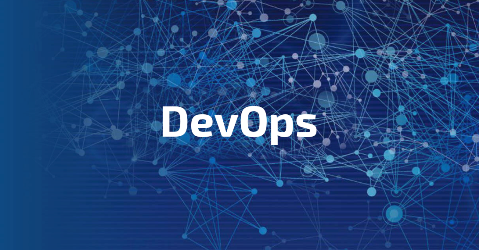DevOps is a set of activities that automates the processes between software development and IT teams. With DevOps, these teams can together build, test and release more swiftly as well as more and accurately. It can be narrated as an agile relationship between the development and IT operation teams. Time, accuracy and quality can be sacrificed when work is passed between different teams. DevOps can best assist companies to streamline work between multiple teams across the board.
DevOps imparts a working culture that partners developers with operations staff to ensure the organization achieves the optimal running of software with minimal problems. The core objective of the DevOps process is to seamlessly shift work from the rough draft stages into production and be able to detect and correct issues if they occur without disrupting other services.
How does DevOps work?
Collaboration: Implementing a process of shared responsibility, transparency and faster feedback are just a few aspects of teamwork that the DevOps process. It helps in the collaboration of everyone involved in the delivery of a software product. In addition to the development team and IT operations, this could include the testing team, product management and executives. DevOps makes the process more efficient for everyone involved.
Automation: DevOps automates the activities of different tools that include software and hardware in an organization. It acts as a single replacement for any of the traditional tools in a professional atmosphere including attendance registers, varied files, documentation, communication systems and a digital storage system.
Testing: Continuous testing is enabled in a DevOps working environment. Developers build quality into the code and provide test data sets. Quality Assurance engineers configure automated test cases based on the testing environment. The test function in a DevOps environment enables a good balance between quality and speed. Using automated tools reduces the cost of testing and allows test engineers to leverage their time more effectively.
Delivery: The software development practice of a DevOps culture enables continuous delivery process where code changes are automatically built, tested and prepared for a release to production. With this continuous delivery process, there will always be a deployment-ready product that has passed through a standardized test process.
Monitoring: The DevOps process facilitates continuous monitoring process that helps teams be able to measure the performance and availability of a software. These monitoring processes can include server and application monitoring. This improves the overall stability of the software being developed. Continuous monitoring helps identify the root cause of an issue quickly to proactively prevent outages and minimize user issues.
SGS provides a productive line of DevOps services. Follow this link to see how SGS can provide your company with a streamlined DevOps process.

<script type="application/ld+json">
{
"@context" : "http://schema.org",
"@type" : "Article",
"name" : "All about DevOps",
"author" : {
"@type" : "Person",
"name" : "sgs"
},
"image" : "https://www.sgstechnologies.net/sites/default/files/2020-01/01_0_0.png",
"articleSection" : "DevOps is a set of activities that automates the processes between software development and IT teams. With DevOps, these teams can together build, test and release more swiftly as well as more and accurately. It can be narrated as an agile relationship between the development and IT operation teams.",
"articleBody" : "Time, accuracy and quality can be sacrificed when work is passed between different teams. DevOps can best assist companies to streamline work between multiple teams across the board.</P>\n\n<P>DevOps imparts a working culture that partners developers with operations staff to ensure the organization achieves the optimal running of software with minimal problems. The core objective of the DevOps process is to seamlessly shift work from the rough draft stages into production and be able to detect and correct issues if they occur without disrupting other services.</P>\n\n<P><STRONG>How does DevOps work?</STRONG></P>\n\n<P><STRONG>Collaboration:</STRONG> Implementing a process of shared responsibility, transparency and faster feedback are just a few aspects of teamwork that the DevOps process. It helps in the collaboration of everyone involved in the delivery of a software product. In addition to the development team and IT operations, this could include the testing team, product management and executives. DevOps makes the process more efficient for everyone involved.</P>\n\n<P><STRONG>Automation:</STRONG> DevOps automates the activities of different tools that include software and hardware in an organization. It acts as a single replacement for any of the traditional tools in a professional atmosphere including attendance registers, varied files, documentation, communication systems and a digital storage system.</P>\n\n<P><STRONG>Testing:</STRONG> Continuous testing is enabled in a DevOps working environment. Developers build quality into the code and provide test data sets. Quality Assurance engineers configure automated test cases based on the testing environment. The test function in a DevOps environment enables a good balance between quality and speed. Using automated tools reduces the cost of testing and allows test engineers to leverage their time more effectively.</P>\n\n<P><STRONG>Delivery:</STRONG> The software development practice of a DevOps culture enables continuous delivery process where code changes are automatically built, tested and prepared for a release to production. With this continuous delivery process, there will always be a deployment-ready product that has passed through a standardized test process.</P>\n\n<P><STRONG>Monitoring:</STRONG> The DevOps process facilitates continuous monitoring process that helps teams be able to measure the performance and availability of a software. These monitoring processes can include server and application monitoring. This improves the overall stability of the software being developed. Continuous monitoring helps identify the root cause of an issue quickly to proactively prevent outages and minimize user issues.</P>\n\n<P>SGS provides a productive line of DevOps services. Follow this<A href=\"/solutions/devops\"> link</A> to see how SGS can provide your company with a streamlined DevOps process.",
"url" : "https://www.sgstechnologies.net/blog/all-about-devops",
"publisher" : {
"@type" : "Organization",
"name" : "SGS"
}
}
</script>










